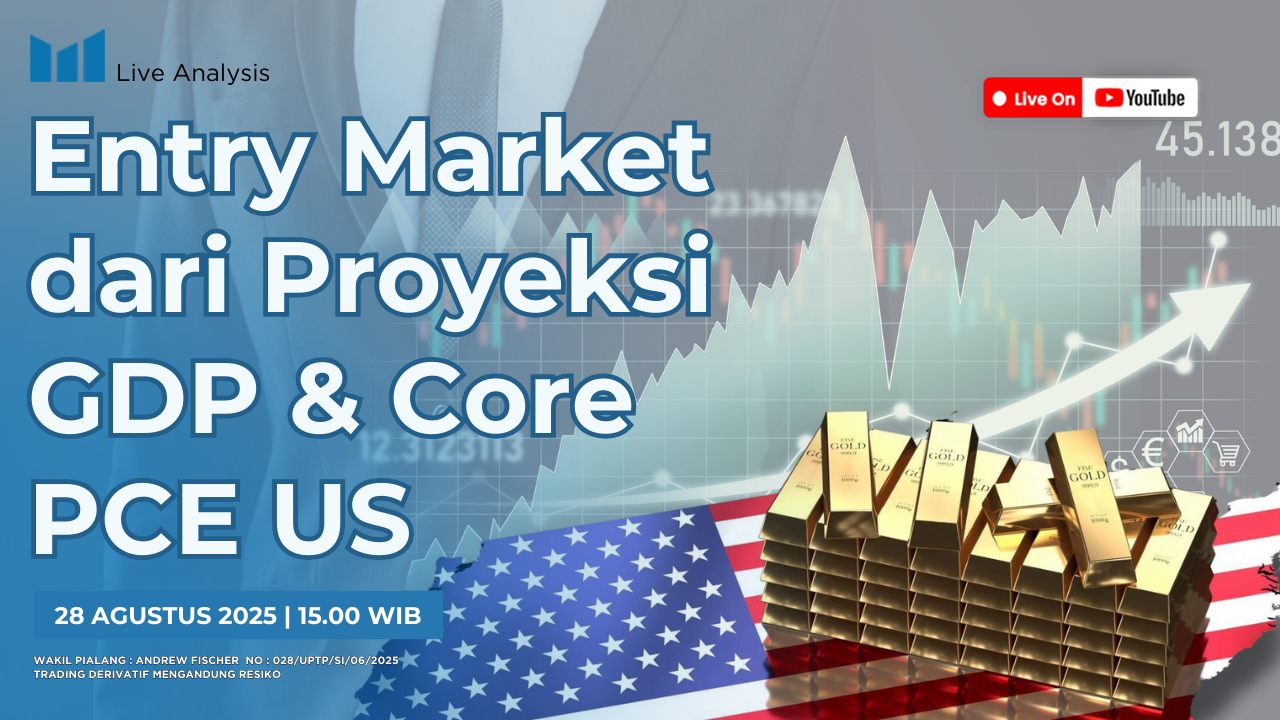Understanding macroeconomic indicators such as Gross Domestic Product (GDP) and Core Personal Consumption Expenditure (Core PCE) is crucial for investors. These figures are not just numbers—they serve as major signals that shape the Federal Reserve’s monetary policy decisions and global market sentiment.
US GDP Q2 2025: Economy Remains Resilient
The preliminary estimate for Q2 2025 GDP shows growth of 3.0% q/q SAAR, above market expectations of 2.3%. This highlights the continued strength of the US economy and delays speculation that the Fed will cut interest rates anytime soon.
Stronger-than-expected growth also indicates that recession concerns remain premature, signaling to investors that the US market continues to display robust resilience amid global uncertainty.
Core PCE: Inflation Still “Sticky”
Core PCE, the Fed’s preferred inflation gauge, stood at 2.8% YoY in June 2025, slightly above the 2% target. This suggests that inflation remains “sticky,” despite various tightening measures by the central bank.
The combination of solid GDP and persistent inflation leaves the Fed cautious. With the Fed Funds rate currently around 5.375%, rate cuts this year are still possible but are likely to be gradual and limited to no more than three times.
Implications for Markets & Investors
Strong GDP and Core PCE data imply that market volatility will remain elevated. Investors should be mindful of timing their entry and consider a step-by-step strategy.
- Technology Sector → sensitive to interest rates but remains attractive due to long-term innovation.
- Real Estate Sector → pressured by high borrowing costs, requires careful monitoring of the cycle.
- Defensive Sectors (consumer staples, utilities, healthcare) → relatively stable during uncertainty.
Case Study: Market Reactions to Economic Data
- February 2025: Core PCE rose 2.8% → equity markets corrected on inflation concerns.
- Q1 2025: GDP came in at 3.3% → markets rebounded, with tech stocks regaining traction.
Key takeaway: economic data releases act as primary short-term market triggers, requiring investors to respond quickly.
Conclusion
Recent GDP and Core PCE data show that the Fed is unlikely to take an aggressive stance on rate cuts. Investors are advised to remain cautious, enter gradually, and focus on both defensive and cyclical sectors.
📌 Recommendation: Closely monitor upcoming data releases (April 2025 and beyond) to confirm inflation and growth trends. By doing so, investors can better position themselves for well-timed and profitable market entries.
